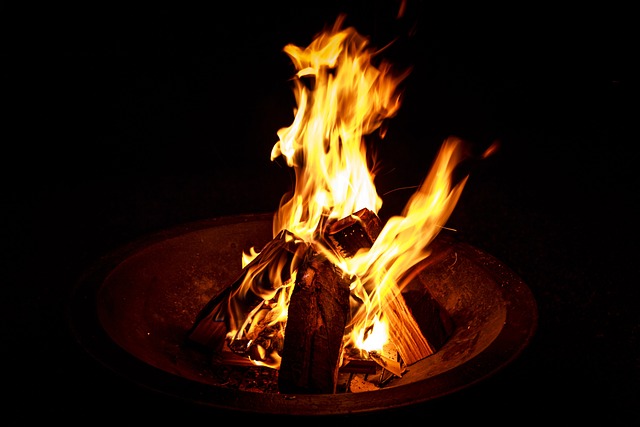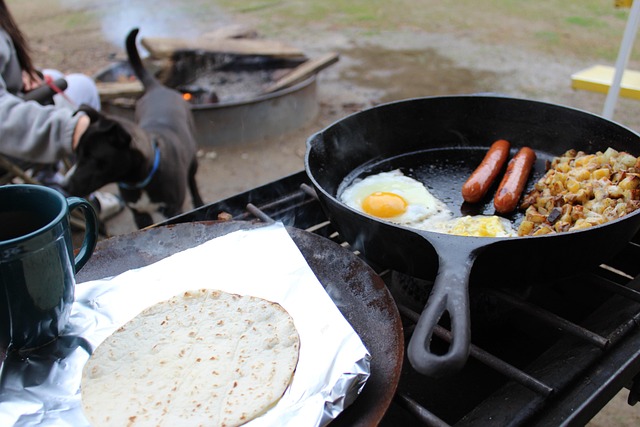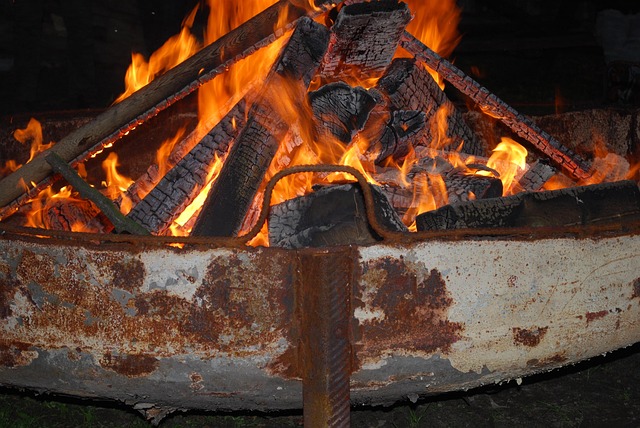Fire pit installation requires strategic planning for safety, functionality, and design in outdoor spaces. It involves assessing yard/patio location, choosing between portable or custom pits, measuring for local codes, and considering professional help for complex installations. Key factors include size/style matching, sturdy construction, fuel source selection (gas/wood), proper placement, and regular cleaning for safety and longevity.
Transform your outdoor space with a cozy, captivating focal point – a custom-fit fire pit. This comprehensive guide explores everything from understanding the installation process to selecting the perfect design for your area. We’ll walk you through the steps of safely installing your fire pit, ensuring a delightful and secure experience. Learn essential maintenance tips and best practices to keep your new outdoor feature in top condition, making it the heart of your gatherings for years to come. Discover the art of fire pit installation.
- Understanding Fire Pit Installation: A Comprehensive Guide
- Choosing the Right Fire Pit for Your Outdoor Space
- Steps Involved in Installing a Fire Pit Safely
- Maintaining Your Fire Pit: Tips and Best Practices
Understanding Fire Pit Installation: A Comprehensive Guide

Fire pit installation is a process that requires careful planning and consideration to ensure safety, functionality, and aesthetics in any outdoor space. The first step involves assessing your yard or patio to determine the best location for the fire pit, taking into account factors like distance from buildings, overhangs, and landscaping. It’s crucial to choose a spot that’s level and clear of flammable materials.
Next, consider the type of fire pit that best suits your needs. There are various options available, from simple portable models to custom-built in-ground pits. Each has its own installation requirements and benefits, so understanding these variations is key. Once you’ve made your selection, measure and mark out the area for excavation, ensuring it aligns with local building codes and regulations regarding fire safety. Professional assistance might be required for complex installations or when dealing with utility lines.
Choosing the Right Fire Pit for Your Outdoor Space

Choosing the right fire pit for your outdoor space is a crucial step in creating a cozy and inviting ambiance. Consider the size and layout of your patio or yard, as well as the style and theme of your overall outdoor design. For smaller areas, compact and portable fire pits offer versatility and convenience, allowing you to move them around as needed. Larger spaces can accommodate more substantial fire features, such as built-in or custom-designed pits, which become the focal point of your outdoor gathering spot.
When deciding on a fire pit installation, safety should always be top priority. Look for models with sturdy construction and safety features like automatic shut-off valves and heat-resistant materials to ensure peace of mind while enjoying the warmth and glow. Additionally, consider fuel options – gas or wood – based on your preferences, maintenance requirements, and local regulations.
Steps Involved in Installing a Fire Pit Safely

Installing a fire pit safely involves several crucial steps that ensure both functionality and safety. First, select an appropriate location clear of flammable materials, overhangs, and low-hanging branches. Clear a circular area approximately 3–4 feet in diameter, ensuring it’s free from obstructions for optimal air circulation and heat distribution.
Next, prepare the base by leveling the ground using compacted gravel or sand to prevent uneven heating. Position the fire pit according to your chosen location, ensuring it’s centered and stable. Fill the pit with a suitable fuel source, such as dry firewood or charcoal briquettes, following manufacturer guidelines for proper fueling. Always prioritize safety when installing a fire pit, keeping a close eye on local regulations and best practices for responsible outdoor combustion.
Maintaining Your Fire Pit: Tips and Best Practices

Maintaining your fire pit is essential for ensuring it remains a safe and enjoyable feature in your outdoor space. Regular cleaning and proper care can extend its lifespan significantly. Start by clearing away any debris, leaves, or ash accumulation around and inside the pit after each use. This simple step prevents clogs and allows for better airflow, which is crucial for efficient burning.
When it comes to fire pit installation, consider the surrounding area. Ensure there’s enough open space to prevent embers from reaching nearby objects. Regularly inspect the pit for any signs of damage or wear, especially if you use it frequently. Repair or replace broken parts promptly to maintain safety and functionality. Additionally, always have a fire extinguisher or water source nearby as a precaution.
Creating an outdoor oasis doesn’t have to be complicated. With the right knowledge, any space can transform into a cozy gathering spot around a warming fire pit. By understanding fire pit installation, choosing the perfect fit for your area, and following safe practices during setup and maintenance, you’ll enjoy countless evenings of comfort and joy under the stars. Remember, proper fire pit installation is key to a safe and enjoyable experience, so take the time to learn and follow best practices.
